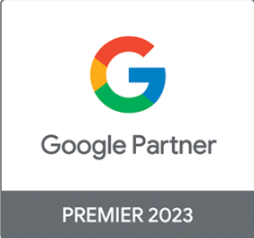We do this using a combination of software, and digital search experts. Helping you drive more digital revenue by getting all the fundamentals in place.
Here’s a comprehensive rundown of each component part.
1. Infrastructure
Like a house, without solid foundations, it’s going to sink. So let’s start with Infrastructure.
There is little point in “doing digital” if your website is not technically sound. The problem with this statement is the word technical.
By default talking tech allows people to hide or confuse through jargon. Our approach is to audit your website with over 100 technical and human aspects to give you a health score, plus a specific set of actions, of what needs fixing or improving, in priority order.
This last part is key, saying a website has 1,000’s of errors is not helpful. Some will be a high priority, some will be of a lower priority. The reality is that you need to start somewhere and “eat the elephant one bite at a time” and in the right order.
The core fundamentals being:
- Speed: does the website load quickly for users?
- Accessibility: does the website render correctly (and quickly) on all devices?
- Google Bot Friendly: can the website content be indexed both by humans and Google (and other) search bots?
- User Sign-Posting: Do your pages and website assets have user-friendly names and titles that entice a user to want to consume them?
- Trust: Are all your site elements secure, it’s all very well having an SSL (security certificate) but often the content within a website is still not 100% secure. Creating trust issues for both Google and human users.
The Algorithm Technical Audit can help accelerate your digital strategy. Find out more.
2. Competitor Insight
We are often asked to “please can you do some SEO and content optimisation” but that’s a very broad and potentially damaging request. Why? Because you need to choose the battles that you can win. You cannot optimise for everything, you will end up with a diluted strategy that gets results far slower than an approach that is backed by data and insight.
In simple terms, if you want to beat the competition, you need the data to answer the following key questions, or your strategy will be fundamentally flawed from the start.
- What are people searching for? What is the total universe of things that people search for in relation to your products and services. Not just the generic / large volume phrases, but also the really specific long-tail searches. Critically what question queries are people seeking answers to?
- What is your market share? Based on the above, how visible is your brand against that total universe of search terms?
- Who is your competition? We all like to think that we know who our competitors are. Who you think your competition is and who actually is your competition on Google (or similar) is often different to the list you first expected?
- How strong is the competition? In comparison to your own market share, how does the competition stack up, where are they specifically weak or strong?
- Where are the gaps & opportunities? Based on the above, where are the easiest gaps to gain market share based on a combination of:
- Search volume
- Competition (strength or weakness)
- Projected uplift in traffic
- Ease of uplift (how hard is it to own the space, relative to all other opportunities)
Then like most things, you need to prioritize. What are the top 20 – 30 gaps to exploit, with a logical content strategy? Again, do not try to optimise for everything, use the data to guide your strategy.
The Algorithm content visibility analysis is a powerful tool to drive your digital content strategy. Find out more.
3. Measurement & Targets
So your infrastructure is in decent shape, what next? Fundamental to making the right strategic and tactical decisions is your data.
Most brands and clients have invested time and sometimes lots of money on website measurement tools. These are often not correctly configured, or missing lots of simple tricks to track more interactions or pain points. So the start is always a quick integrity check to see if everything is deployed correctly and if all actions and useful behaviors are being tracked. This often involves custom tracking or simple scoring frameworks.
Once everything is set up and tested, we need to face reality, we never really look at the tools and reports that we have invested time and money into. Why? Because there is way too much to look at. We often use the following statements, to illustrate the point:
- Q. What is the BEST thing about digital marketing?
- A. You can track everything!
- Q. What is the WORST thing about digital marketing?
- A. You can track everything!
The above in 90% of cases leads to people talking about everything and deciding on nothing. Analysis = Paralysis.
So, we need to keep it super simple (the data may be complex but drawing insight must be easy):
- What is the objective (maybe one or two things max)
- Are we measuring it?
- Are we visualising it, without the need to run reports or admin tasks?
- Do we know what is a KPI versus a Target
A target is what you are aiming for: sell 100 widgets by June 21st.
A KPI is the indicator of success: to convert 5% of Users into Revenue, as an example.
If you are not spending time discussing actions (one or two each week) then something is most likely wrong. Don’t just chat, do things, but don’t expect all of your actions to work. Track their impact and respond accordingly. Rinse and repeat.
4. User Experience
So, now we have a strategy, the right infrastructure and are measuring the right things, with clear goals. Amazing, but there’s much more work to be done. What is the user experience for your customers?
This can be a broad and complex topic. But stick to a few simple questions and things become more manageable.
- Can you quickly see user flows and identify blockages? Not by relying on ugly Excel reports. Visualise and track your key journeys.
- Use the 80/20 rule. Focus on the 20% of things that drive 80% of the interactions. Look for key metrics on those things, for example:
- Declining traffic
- High bounce rates
- High exit rates
A key consideration of user experience is content. Is the content too light? Is the content too detailed? How much time are people spending consuming it? Too little or too much, could be a good or bad thing? Is it difficult to read or poorly sign-posted?
5. Content
Making sense of all the data points especially related to content and user behaviour is actually harder than you first think. All the data is there in Google Analytics (or any other web measurement platform), the issue again, is that it is hard to bring all the right elements together quickly/visually to make decisions in the right order of priority.
We built a content analysis tool that tries to do the job above in one simple visualisation. If we take key website metrics like the ones given above and then simply score and weight each metric we can quickly get to a priority list of suggested optimisations.
Based on bounce rate, traffic trends, reading difficulty, volume, time on page and accessibility measures like speed and mobile friendliness, we can quickly pull a list of the content that needs to be enhanced in priority order. In bite-sized chunks.
6. Audiences (Paid Media)
Content is nothing without eyeballs to view it. This is why we rather speak about audiences.
Often brands or agencies fall into the trap of planning search and paid social campaigns around specific keywords, placements (websites) and topics or interests.
The first question often posed is: Q. Where does my target customer hangout online? Then what follows is a very focussed and specific list of targeting. But let’s get back to that key question: Q. Where does my audience hangout online? Well annoyingly, everywhere, they consume news, sport, entertainment, read emails just like everyone else.
If you keep this insight at the heart of what you do, the question should be. Q. How do I create an audience bucket of people to keep talking to. The word bucket is intentional, why? Because buckets often leak. So then the question becomes Q. How do I keep a fresh bucket that does not leak or decay over time? The answer is by planning in audiences that you can remarket to. We should not expect a potential customer to see an ad then simply click and buy. It may take a few interactions before the customer remembers who you are and trusts you enough to take a leap of faith into buying or enquiring about your product or services.
Planning in this way changes the strategy to focus on remarketing, multiple channels and interactions.
Tracking methods and audience management then becomes critical to paid media success.
7. Conversion Rate Optimisation
And then we reach the most talked about but least deployed marketing tactic. CRO, or Conversion Rate Optimisation.
Put simply, its a methodology of testing if a customer is more likely to respond to version A of a page v’s version B of a page.
The reason it’s underused is two-fold. 1. People don’t know where to start, and 2. People think it requires developers to create page or page element variations. Understandably, developers have many other priorities and CRO will never be top of the list. BUT, you don’t need developers to make page variations. This can be done in tools like Google Optimise, without detailed technical or design skills. Google Optimise and other CRO tools, enable a user to create variations in a WYSIWYG editor.
Once the variations are complete, just press go, and let the platform tell you if the “green call to action button” beats the “blue call to action button”, or any other tests that your heart desires.
The trick with CRO is again down to prioritisation and testing the important elements first, then having a plan or strategy to work to. The plan will always change over time as you learn what works and does not work.
So, what if you could uplift your conversion rates by +12%? The impact, of course, is significant.
Bringing It All Together
We are almost at the end of our simple framework. It does not cover everything but it does make sure you cover all the essential elements to drive greater digital success.
We have made reference to the dangers of data complexity and the need for simple, a non-admin visualisation of success. This is what we refer to as Integrated Reporting. Not just digital data but marrying digital data with e-commerce or CRM sales data to drive decision making and optimisation.
This means ditching manual ad hoc reports and automating data into simple views based on your objectives and KPIs. At Algorithm, we do this through simple application connections and then bringing everything into a simple view, then you never have to ask for the data, it should always be there and always be simple to make decisions upon.
If you need help bringing your marketing strategy into a single reported ecosystem, take a look at our integrated reporting services.



